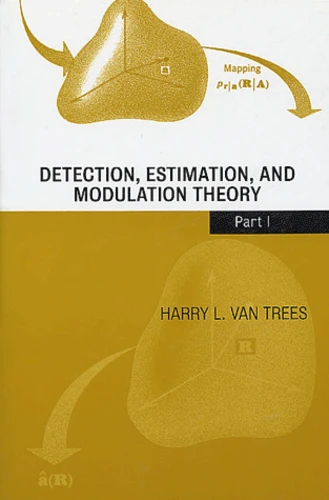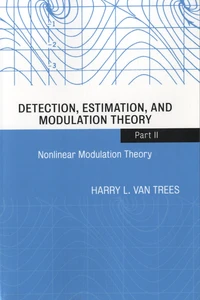Detection, Estimation, and Modulation Theory. Part I
Par :Formats :
- Paiement en ligne :
- Livraison à domicile ou en point Mondial Relay indisponible
- Retrait Click and Collect en magasin gratuit
- Nombre de pages697
- PrésentationBroché
- Poids1.02 kg
- Dimensions15,5 cm × 23,5 cm × 3,5 cm
- ISBN0-471-09517-6
- EAN9780471095170
- Date de parution01/01/2001
- ÉditeurWiley
Résumé
Originally published in 1968, Harry Van Trees's Detection, Estimation, and Modulation Theory, Part lis one of the great time-tested classics in the field of signal processing. Highly readable and practically organized, it is as imperative today for professionals, researchers, and students in optimum signal processing as it was over thirty years ago. With a wide range of applications such as radar, sonar, communications, seismology, bio-medical engineering, and radar astronomy, among others, the important field of detection and estimation has rarely been given such expert treatment as it is here. Each chapter includes section summaries, realistic examples, and a large number of challenging problems that provide excellent study material. All of the results are still applicable to current systems. For students in signal processing or professionals looking for a reliable refresher course, Detection, Estimation, and Modulation Theory, Part I provides authoritative, practical coverage by one of the most renowned figures in the field. Part I also provides necessary background for Optimum Array Processing, Part IV of Detection, Estimation, and Modulation Theory.
Originally published in 1968, Harry Van Trees's Detection, Estimation, and Modulation Theory, Part lis one of the great time-tested classics in the field of signal processing. Highly readable and practically organized, it is as imperative today for professionals, researchers, and students in optimum signal processing as it was over thirty years ago. With a wide range of applications such as radar, sonar, communications, seismology, bio-medical engineering, and radar astronomy, among others, the important field of detection and estimation has rarely been given such expert treatment as it is here. Each chapter includes section summaries, realistic examples, and a large number of challenging problems that provide excellent study material. All of the results are still applicable to current systems. For students in signal processing or professionals looking for a reliable refresher course, Detection, Estimation, and Modulation Theory, Part I provides authoritative, practical coverage by one of the most renowned figures in the field. Part I also provides necessary background for Optimum Array Processing, Part IV of Detection, Estimation, and Modulation Theory.





